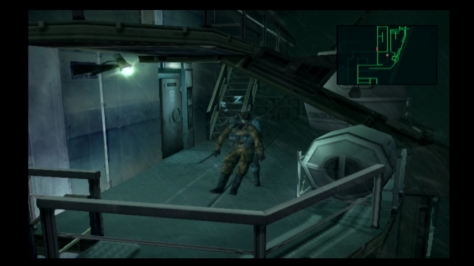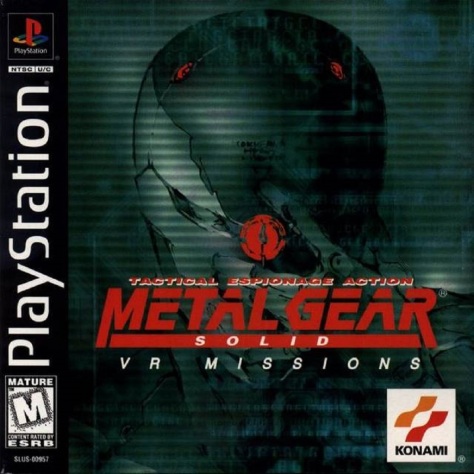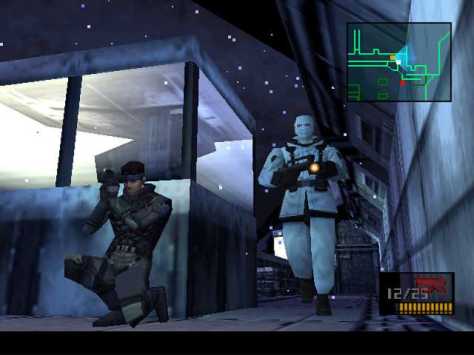
It seems like every year I begin my best-of list by stating I didn’t play many new releases. This year is no different, and the rate of current releases to “older” games is very close to last year’s. Nonetheless, I do feel like I played more new releases this year, they just didn’t make the cut. Again, like last year I’ll order these alphabetically and provide links to any of the title’s that I actually wrote about.
Deadly Premonition: The Director’s Cut – This game was such a bore for the first handful of hours. I couldn’t quite figure out where the love for this game originated. Granted, it’s mostly ironic love, but it was still lost on me. Then everything clicked. One weekend in particular I had ample free time to devote to the game and I figured out the side missions and realized that’s where the addictive qualities lay. After forty hours, I had a platinum trophy in my possession and a new found appreciation for Swery65.
Her Story – This is one of the few games this year that I was able join in on the zeitgeist. The weekend it came out (or maybe one or two later), my friend and I devoted an entire gaming session to solving the mystery within the game. Interacting with the emulated vintage computer system and watching the four second to three minute clips of interviews was a gaming experience unlike any other I’ve had. We took notes and had fun speculating about the mystery every step of the way. Heck, after all was said and done we went back and watched the entire interviews spliced in chronological order on YouTube. Unforgettable. Unlike my intentions to come back and write more about the game as mentioned in my review…
Lost Odyssey – There’s always a few games that I fail to write reviews for but luckily, I did at least write something about this game (two articles in fact!). I’m bad about doing that, especially with the games I enjoy the most. That’s the case with this gem. This is by most measures, a very traditional JRPG; it is, though, an exemplary traditional JRPG. Like Deadly Premonition, it took a while for this game to click with me but once it did, I was irrevocably sucked in. I could lavish praise on the mature story, or the addictive character growth mechanics but I failed to do so after originally beating the game so why start now? Nonetheless, easily one of the best games I played this year.
Metal Gear Solid – With the release of Metal Gear Solid V: The Phantom Pain, I felt the urge to play through the entire MGS series (I tend to get these urges, especially with long-running series’ damn it!). Since that urge, my friend and I have played through this title and Metal Gear Solid 2: Sons of Liberty, and we’re currently working on Metal Gear Solid 3: Snake Eater (and I played VR Missions, solo). The second game had much more to analyze and is likely the more important video game to the industry (perhaps of all time?) but my friend and I had more fun playing the first one.
South Park: The Stick of Truth – Here’s one of those games that I didn’t write anything about. Without a doubt, it’s got the funniest writing in a game I’ve ever played. The vulgarity may offend some, but hey, it’s a South Park video game! It’s a brief riot that invoked the sensibilities of the Mario RPG games, ergo, turn-based combat with quick-time events. It was a well-crafted romp through the South Park universe and Jeff, if you’re reading this, play it already!
Super Mario Maker – I haven’t written about this game, yet. I’m still playing it all the time and it’s been a hub for the gaming sessions my friend and I have. I’m not usually attracted to games that have a user-designed focus but I’ve had a lot of fun designing stages in this game. It definitely helps that I’m designing Mario stages and can immediately understand how everything will work and how to design a stage. That being said, I’m learning so many new techniques and playing so many awesomely difficult stages that you’d never find in a Nintendo published 2D Mario game.
The Walking Dead: A Telltale Game Series – I missed out on this originally, despite the pleas of a friend and the acclaim that was thrown this game’s way, but I was looking for just such an experience after getting my PS4 after Christmas last year. This game told an enthralling story that packed a punch and left me wanting to find two hours to devote to the next episode after completing the previous one. So glad I played this.
Wolfenstein: The New Order – Okay, apparently this is just the section of the list where I talk about games I never wrote about. Like many of the games I’ve included, I’ve selected this game based in part on its story. That’s something that is rarely said about an FPS, but it’s true. This was a narrative-driven shooter that had me interested in what was going to happen to the characters it revolved around. It didn’t hurt that the gameplay was fun as heck, too.
Xenoblade Chronicles X – Like Super Mario Maker, I haven’t written about this game as I’m still playing it. I’m about thirty hours in at the moment and can’t spend enough time in the world. I’ve been doing way too many monotonous side missions instead of the affinity and story missions, but I’ve been doing this to spend more time roaming the large environments and exploring every nook and cranny. The story is rubbish but who cares with a world like this one’s!
You Must Build a Boat – Mobile games for me serve mostly as time wasters, so it’s impressive when I play one when my time should be devoted elsewhere. The dungeon-crawling, character growth elements put a spin on the tile-matching gameplay. For a couple of bucks, don’t think about it, just buy this game.
Like this:
Like Loading...

![Star Ocean: Till the End of Time [PlayStation 2] – Review](https://mybrainongames.files.wordpress.com/2016/06/star-ocean-till-the-end-of-time-alternate-box-art.jpg?w=672&h=372&crop=1)


![Metal Gear Solid 2: Sons of Liberty [PlayStation 2] – Review](https://mybrainongames.files.wordpress.com/2015/11/metal-gear-solid-2-sons-of-liberty.jpg?w=672&h=372&crop=1)






![Metal Gear Solid: VR Missions [PlayStation] – Review](https://mybrainongames.files.wordpress.com/2015/10/metal-gear-solid-vr-missions.jpg?w=672&h=372&crop=1)




![Metal Gear Solid [PlayStation] – Review](https://mybrainongames.files.wordpress.com/2015/09/metal-gear-solid.jpg?w=672&h=372&crop=1)




